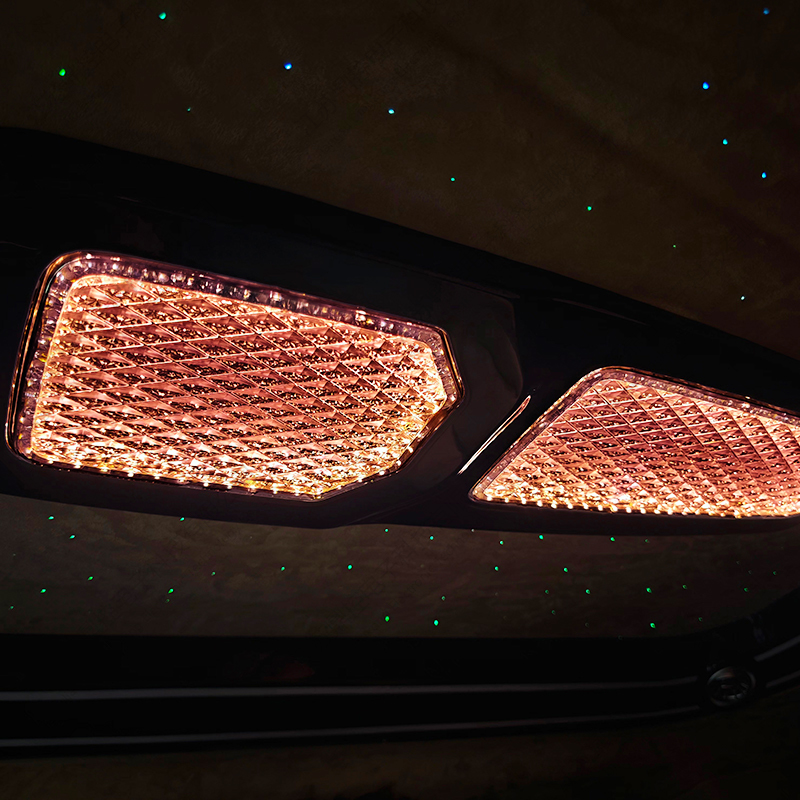1: Introduction – Enhancing Comfort and Convenience with Car Armrests The Importance of Comfort in Modern Driving In today’s automotive landscape,...
READ MOREOct 21, 2025
Replacing or upgrading the interior parts of an MPV (Multi-Purpose Vehicle) can dramatically improve comfort, aesthetics, and functionality. From new seat covers and dashboards to flooring and trims, these changes give an aging vehicle a fresh, personalized look. However, while many car owners focus on style or convenience, there are several important but easily overlooked details that can affect both the quality of installation and the long-term value of the vehicle. Let’s take a closer look at the key aspects that are often missed when replacing MPV car interior parts.
One of the most common mistakes is failing to check compatibility between the replacement parts and the specific MPV model or trim level. Even within the same brand, models may differ slightly in size, shape, and mounting points.
For example:
Always verify OEM (Original Equipment Manufacturer) specifications or consult the car’s VIN number when ordering parts. Choosing compatible components ensures proper fitting, safety compliance, and avoids unnecessary return costs.
Modern MPVs are packed with safety features such as seat airbags, occupancy sensors, and seatbelt reminders. When replacing seats, dashboards, or steering wheel covers, it’s crucial to consider how these systems are integrated.
Overlooking this detail can lead to:
Before installing new interior components, always check whether the replacement part supports airbag compatibility and ensure that installation is handled by a qualified technician familiar with safety system calibration.
Many car owners focus on functionality but overlook material consistency and color matching. Interior parts such as door panels, dashboards, and console trims are made from specific types of plastic, leather, or fabric that differ in texture and sheen.
If not matched properly, new parts can make the interior look uneven or cheap. For example:
To maintain a factory-quality look, use color codes provided by the manufacturer and, when possible, order parts from the same production batch or supplier.
Interior replacement often focuses on visible parts, but hidden components like sound insulation and foam padding play a huge role in overall comfort. When replacing carpets, floorboards, or door panels, removing and reusing old insulation materials can lead to increased cabin noise, vibration, and reduced temperature control.
High-quality insulation not only keeps the interior quiet but also enhances the performance of air conditioning and heating systems. Therefore, when replacing major interior sections, it’s wise to inspect or upgrade the insulation layers — especially for MPVs that prioritize passenger comfort and long-distance driving.
Another overlooked aspect is the condition of the mounting clips, bolts, and fasteners used to secure interior parts. Many of these small components are made from plastic and can become brittle over time. Reusing them may lead to rattling noises, misalignment, or loose panels after reassembly.
Always check whether your replacement parts come with new mounting hardware, or purchase OEM-compatible clips separately. Proper fasteners ensure long-lasting installation and maintain the structural integrity of the interior.
Today’s MPVs are equipped with advanced electrical systems — from seat heaters and ambient lighting to USB ports and infotainment units. When replacing interior components, it’s common to overlook wiring compatibility and connection quality.
Issues often include:
Before reinstalling panels or seats, always double-check the wiring diagram and test each function. A professional installation ensures that no hidden electrical issue emerges later.
Many MPV owners forget that some interior parts are tied to air quality and filtration, such as cabin air filters, air vents, and duct linings. When replacing dashboards or center consoles, dust or debris can accumulate inside air ducts, affecting ventilation efficiency and odor control.
It’s a good idea to replace or clean cabin filters and inspect air vents during interior refurbishment. This simple step enhances passenger comfort and reduces allergens inside the cabin.
Replacing seats, armrests, or steering wheels can unintentionally change the driving posture or comfort balance. Some aftermarket parts may look stylish but lack proper ergonomic design or adjustment options.
To ensure comfort and safety:
Small ergonomic mismatches can lead to fatigue during long drives, especially for MPVs used for family trips or commercial transport.
Finally, many car owners overlook whether replacement parts are safety-certified for road use. Non-certified parts may not meet crash-test or fire-retardant standards required by law in certain countries. Always verify that materials comply with automotive-grade safety standards (such as ISO, ECE, or FMVSS) before installation.
MPV Car Interior Replacement Parts is an excellent way to refresh and personalize your vehicle, but success depends on attention to detail. By focusing on compatibility, safety integration, materials, insulation, and installation quality, you can achieve a result that not only looks great but also preserves comfort, safety, and resale value.
In short, the beauty of a refreshed MPV interior isn’t just in what you see — it’s in the precision, materials, and hidden details that ensure it performs like new for years to come.

1: Introduction – Enhancing Comfort and Convenience with Car Armrests The Importance of Comfort in Modern Driving In today’s automotive landscape,...
READ MOREI. IntroductionThe automotive industry is undergoing constant evolution, with a growing emphasis on vehicle maintenance and personalization. For car o...
READ MORE1. Introduction The Tesla Model 3 and Model Y have quickly become two of the most popular electric vehicles on the market. With their sleek designs, i...
READ MORE